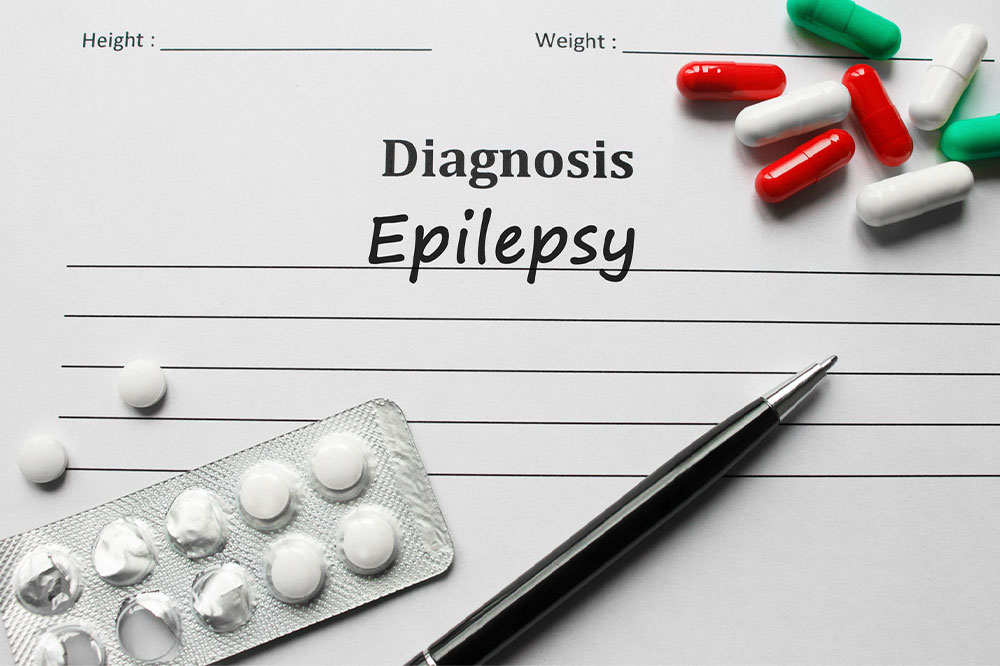
Causes, symptoms, and management tips for epilepsy
Epilepsy is a condition in which the nerve cells in the brain are unable to transmit signals properly, resulting in seizures. These seizures cause involuntary muscle movements, lead to sensation and behavioral changes, and affect the individual’s awareness. There is no permanent cure for this brain disease; however, some treatment options can help control seizures to a great extent. Let’s take a deep look into the causes, symptoms, and treatments for epilepsy.
Causes of epileptic seizures
The exact cause of epilepsy has not been discovered yet; however, the risk of developing the disease can increase tremendously if the person falls under these risk categories:
Inherited genetics
There are some types of epilepsy, like childhood absence epilepsy or juvenile myoclonic epilepsy, which may be passed on from generation to generation. While it is not certain that a family history means the disease will develop in an individual, it does increase the risk factor.
Head injuries
Since epilepsy is a brain disorder, head injuries can increase the risk of this condition. Significant falls, any accidents, or a blow to the head are concerning causes.
Mesial temporal sclerosis
This is a scar that develops in the part of your brain near your ear called the temporal lobe, which can lead to a rising risk of focal seizures.
Brain infections
This can include encephalitis, neurocysticercosis, and meningitis.
Developmental disorders
These include birth abnormalities that affect the brain, such as tuberous sclerosis, focal cortical dysplasia, and even polymicrogyria.
Immune disorders that attack the brain cells can also be a cause of epileptic seizures. These are:
Metabolic disorders
Issues with the metabolic system in the body can lead to seizures.
Brain vessel abnormalities
Other conditions can complicate one’s overall health and lead to an increased risk of seizures. Examples of these are dementia, stroke, or arteriovenous malformations.
Symptoms of epileptic seizures
Look out for symptoms like involuntary and uncontrolled muscle movements or jerks and prominent loss of muscle tone. Involuntary lip-smacking, hand rubbing, chewing motion, or finger motions, problems in understanding or communicating with others, and a prolonged blank stare are some signs to note. The symptoms of the condition can also manifest as temporary loss of consciousness or awareness, psychic symptoms including dream anxiety, fear or even deja vu, rapid breathing and heart rate, upset stomach with waves of cold or heat, and also goosebumps. Also, any change in hearing, taste, smells, vision, or even feelings of numbness and tingling and a temporary state of confusion with slowed thinking should not be ignored.
Treatment and management for epileptic seizures
Once the condition has been diagnosed, there are several treatment plans doctors can opt for to control the symptoms. There is no cure for the condition, but specific management tips can ensure the seizures are stopped, or their frequency is minimized. That said, sometimes, prescriptions alone are not enough. Individuals need a more holistic treatment approach, which includes things like tailored meals and more.
Meal plans for seizure patients
According to research, following a ketogenic meal plan and the modified Atkins meal plan may be helpful in the management of seizure symptoms. These are nutritional plans that focus on eating fats and proteins in higher quantities than carbohydrates, of which one needs only about 20-30 grams a day. Adopting such a meal plan is helpful as the body breaks down this extra fat in the meals and makes ketones. When these ketones are present in the body, they can be used by the body to create energy via a state called ketosis.
Doctors can also suggest more invasive procedures to control seizures in severe cases. Thus, some other treatment options for epilepsy are:
Surgery
If the initial few treatments have not worked for the patient, then surgery is an extremely safe and effective option. This option includes the removal of abnormal tissue or cutting fiber bundles that connect areas of the brain, or targeted destruction of abnormal brain tissue. Depending on the diagnosis, the health provider may recommend the best-suited treatment plan for the condition.
Implanted devices
The doctor may even suggest the implantation of neuromodulation devices, which are helpful in reducing seizures over time by sending electrical impulses to the brain. This is also a safe method and is recommended for those who are not responding to the primary treatment options.
It is advised to go to an epilepsy center to see if the surgery can be performed and not just a regular clinic, as the experts will be able to diagnose better with the right treatment plan.




